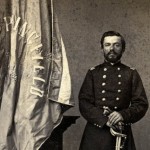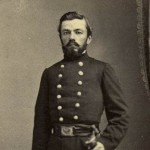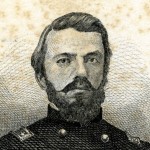Born in Szatmar, Hungary, in 1826, Charles Zagonyi served as a first lieutenant in the Hungarian army and was captured fighting the Austrians during his nation’s failed bid for independence in 1848-49. After the war, Zagonyi fled to Turkey, then England, before finally sailing to America in 1851. Here the former officer found work as a house painter in New York and Philadelphia, and was working as a riding master at a school in Boston when Fort Sumter was attacked. After being denied a commission as a cavalry officer in New York, Zagonyi went to meet Major General John C. Fremont. Brigadier General Alexander Asboth (another Hungarian émigré and Fremont’s chief of staff) introduced Zagonyi to Fremont, and on July 12, 1861, Zagonyi entered the Union Army, and was probably assigned to Fremont’s staff. Lincoln appointed Fremont a major general and placed him in command of the Western Department, based in St. Louis.
On August 2, after both had arrived in Missouri, Zagonyi spoke with Fremont about forming a general’s bodyguard, an organization commonly found in European armies. Fremont and Zagonyi both agreed that American general officers needed such protection as well. “Every general has a body guard, or may have it,” Fremont explained later, “and ought to have it in the field, and this was organized as something necessary to a general.” Not only would such a mounted unit defend the commander and his headquarters, they argued, but also it would provide a good school to train desperately needed cavalry officers for volunteer regiments.
Zagonyi was not commissioned a captain until September 7, 1861, then was promoted to major on September 19, 1861. He recruited, armed, uniformed and equipped four companies for “Fremont’s Body Guard” and commanded them during Fremont’s advance on Springfield in pursuit of Sterling Price in the fall of 1861.
Following his capture of Springfield on October 25, 1861, Zagonyi returned to St. Louis, where the Body Guard was mustered out of service. In March 1862 Fremont was assigned to the newly created Mountain Department. Zagonyi was promoted to colonel and served as an aide-de-camp and his chief of cavalry. After seeing action against Stonewall Jackson in the Shenandoah Valley, Fremont’s department was abolished in late June 1862. He declined to serve under General John Pope and asked to be relieved of command, effectively ending his military career. Before he left his command, Fremont asked President Lincoln to allow him to raise a cavalry regiment to be led by Zagonyi. Lincoln took no action. Zagonyi saw no further service during the war, but remained in close contact with the Fremont family. Zagonyi and Fremont resigned their commissions on the same day in June 1864. After the war, Zagonyi became a businessman in New York, but much of his later life is a mystery. Although there is some debate as to whether or not he returned to Hungary, it is likely he remained in America.







